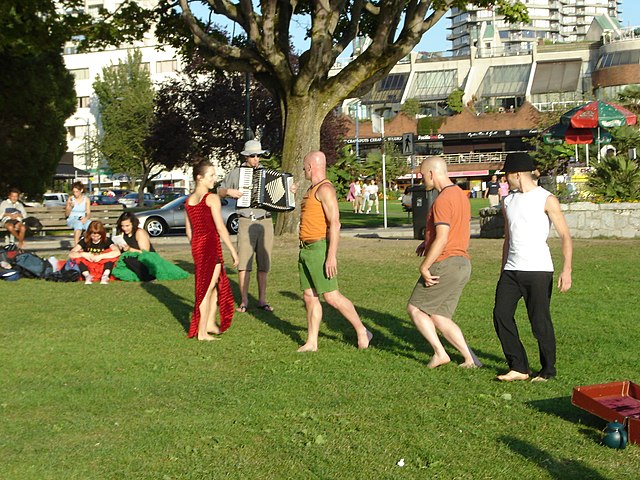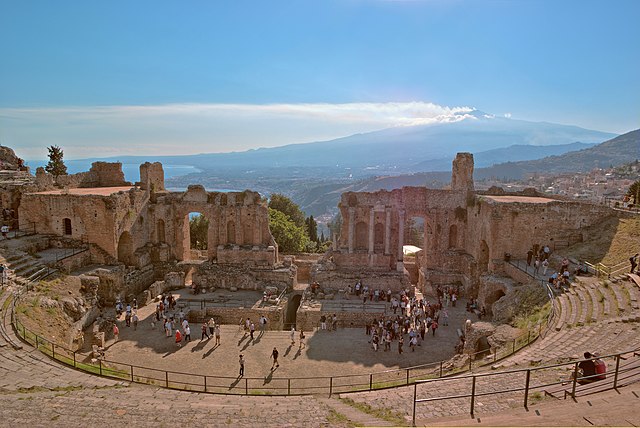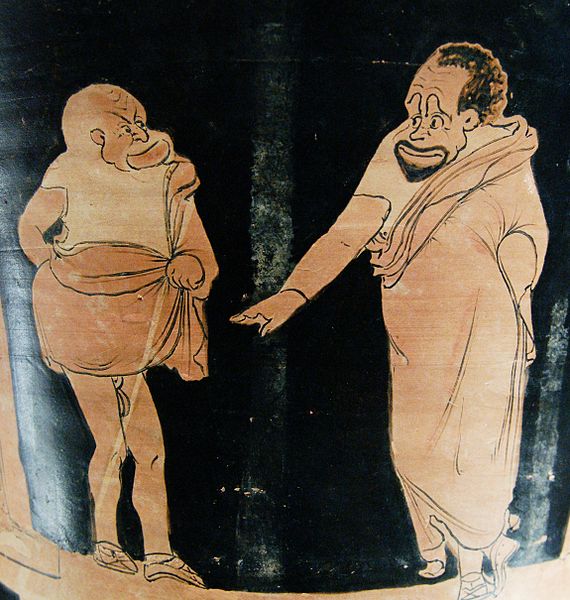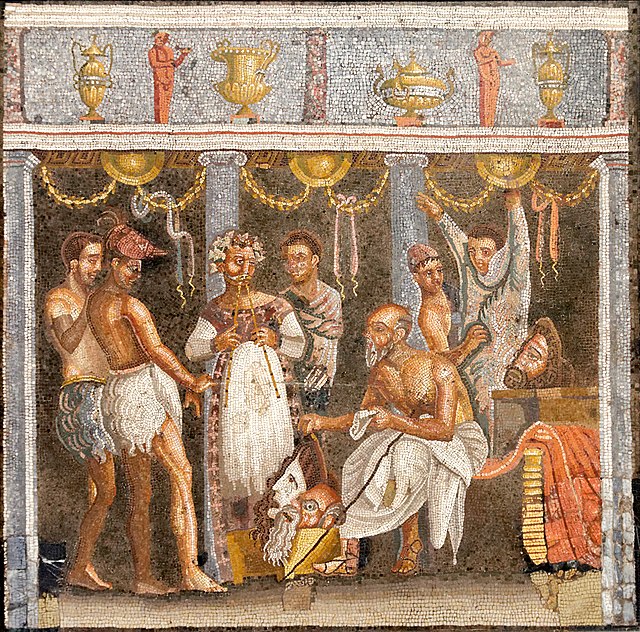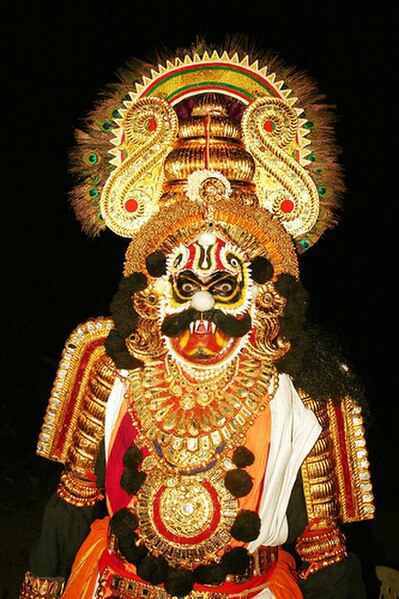Street theatre is a form of theatrical performance and presentation in outdoor public spaces without a specific paying audience. These spaces can be anywhere, including shopping centres, car parks, recreational reserves, college or university campus and street corners. They are especially seen in outdoor spaces where there are large numbers of people. The actors who perform street theatre range from buskers to organised theatre companies or groups that want to experiment with performance spaces, or to promote their mainstream work. It was a source of providing information to people when there were no sources of providing information like television, radio etc. Nowadays, street play is used to convey a message to the crowd watching it. Street play is considered to be the rawest form of acting, because one does not have a microphone or loud speakers.
Street theatre outside the Centre Pompidou in Paris
A troupe of street theatre performers by the beach in Vancouver, British Columbia, Canada.
Acrobatics over Salvador: La Marioneta Gigante by Spanish company Carros de foc
A street play (nukkad natak) in Dharavi slums in Mumbai
Theatre or theater is a collaborative form of performing art that uses live performers, usually actors or actresses, to present the experience of a real or imagined event before a live audience in a specific place, often a stage. The performers may communicate this experience to the audience through combinations of gesture, speech, song, music, and dance. It is the oldest form of drama, though live theatre has now been joined by modern recorded forms. Elements of art, such as painted scenery and stagecraft such as lighting are used to enhance the physicality, presence and immediacy of the experience. Places, normally buildings, where performances regularly take place are also called "theatres", as derived from the Ancient Greek θέατρον, itself from θεάομαι.
Greek theatre of Taormina, Sicily, Italy
A depiction of actors playing the roles of a master (right) and his slave (left) in a Greek phlyax play, c. 350/340 BCE
Roman mosaic depicting actors and an aulos player (House of the Tragic Poet, Pompeii).
Rakshasa or the demon as depicted in Yakshagana, a form of musical dance-drama from India


